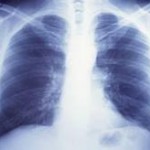
The Institute recommends that you check with your doctor if you have any of the following problems:
- Trouble breathing.
- Pain under the rib cage.
- Pain or swelling in the abdomen.
- Lumps in the abdomen.
- Weight loss for no known reason.
Mesothelioma is a form of cancer affecting the protective lining that covers many of the internal organs of the body called the mesothelium. It’s caused primarily by exposure to asbestos.
Tests that examine the inside of the chest and abdomen are used to detect and diagnose malignant mesothelioma. The following tests and procedures may be used:
Physical exam and history: An exam of the body to check general signs of health, including checking for signs of disease, such as lumps or anything else that seems unusual. A history of the patient’s health habits, exposure to asbestos, past illnesses and treatments will also be taken.
Chest x-ray.
Complete blood count (CBC): A procedure in which a sample of blood is drawn and checked for factors such as the number of red blood cells, white blood cells, and platelets; and the amount of hemoglobin in the red blood cells.
Sedimentation rate: A procedure in which a sample of blood is drawn and checked for the rate at which the red blood cells settle to the bottom of the test tube.
Biopsy: The removal of cells or tissues from the pleura or peritoneum so they can be viewed under a microscope by a pathologist to check for signs of cancer.
Thoracoscopy: An incision is made between two ribs and a thoracoscope (a thin, tube-like instrument with a light and a lens for viewing) is inserted into the chest.
Peritoneoscopy: An incision is made in the abdominal wall and a peritoneoscope (a thin, tube-like instrument with a light and a lens for viewing) is inserted into the abdomen.
Laparotomy: An incision is made in the wall of the abdomen to check the inside of the abdomen for signs of disease.
Thoracotomy: An incision is made between two ribs to check inside the chest for signs of disease.
Bronchoscopy: A procedure to look inside the trachea and large airways in the lung for abnormal areas. A bronchoscope is inserted through the nose or mouth into the trachea and lungs. A bronchoscope is a thin, tube-like instrument with a light and a lens for viewing. It may also have a tool to remove tissue samples, which are checked under a microscope for signs of cancer.
Certain factors affect prognosis and treatment options, including:
- The stage of the cancer.
- The size of the tumor.
- Whether the tumor can be removed completely by surgery.
- The amount of fluid in the chest or abdomen.
- The patient’s age and general health, including lung and heart health.
- The type of mesothelioma cancer cells and how they look under a microscope.
- Whether the cancer has just been diagnosed or has recurred.
If you or a loved one have contracted mesothelioma as a result of asbestos exposure, contact Lopez McHugh for a free consultation.
See more information here:
https://www.cancer.gov/cancertopics/pdq/treatment/malignantmesothelioma/patient
